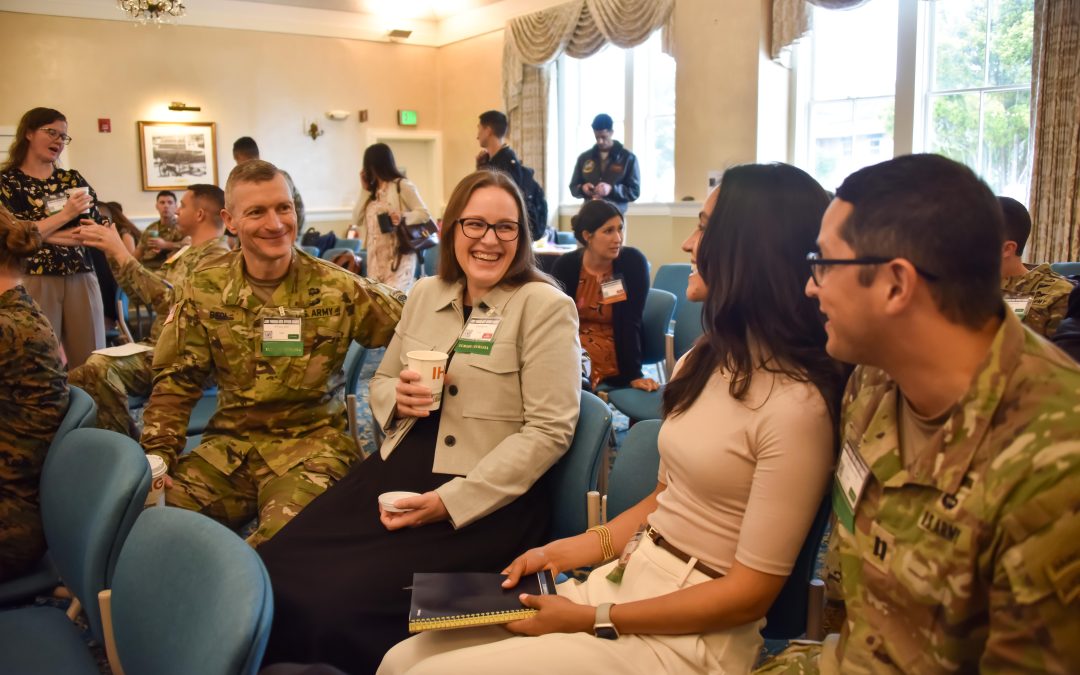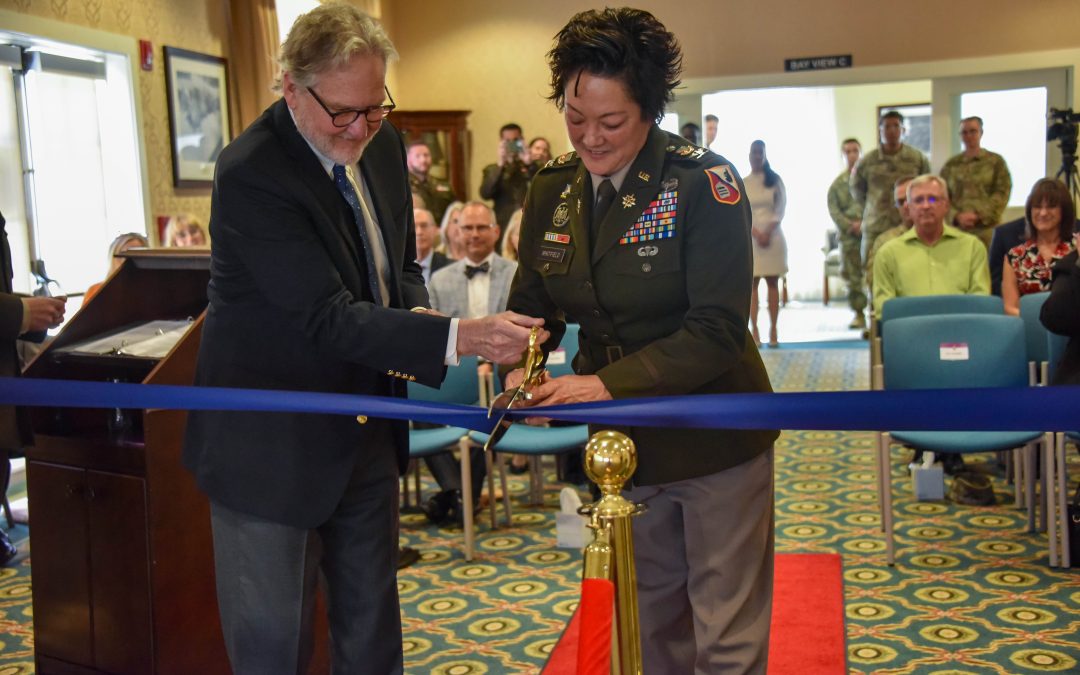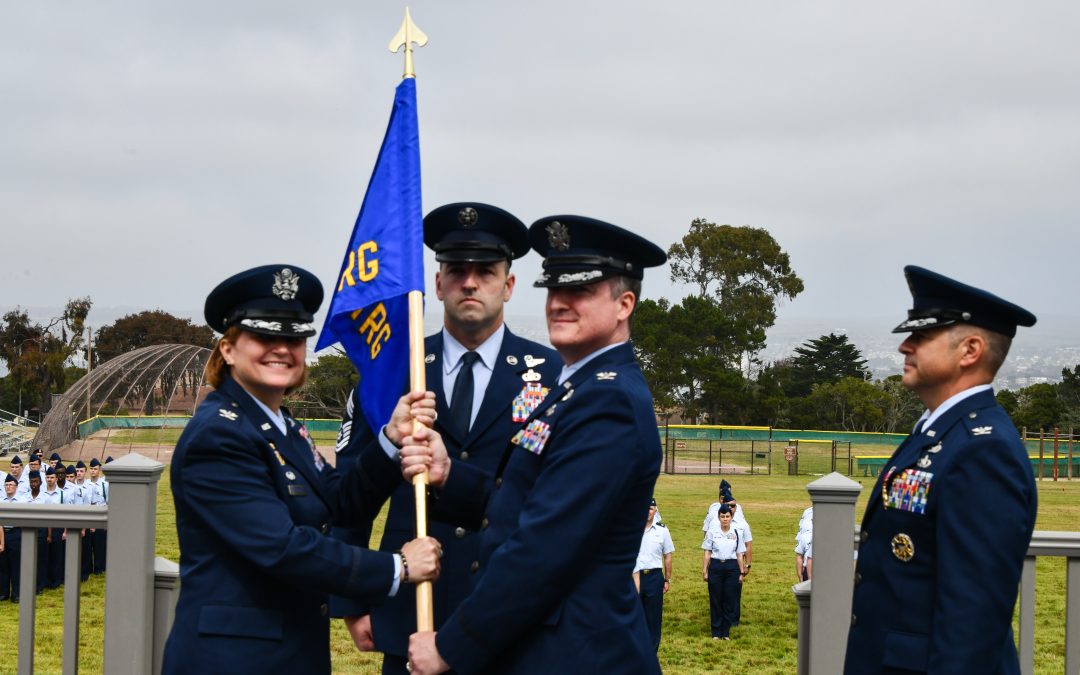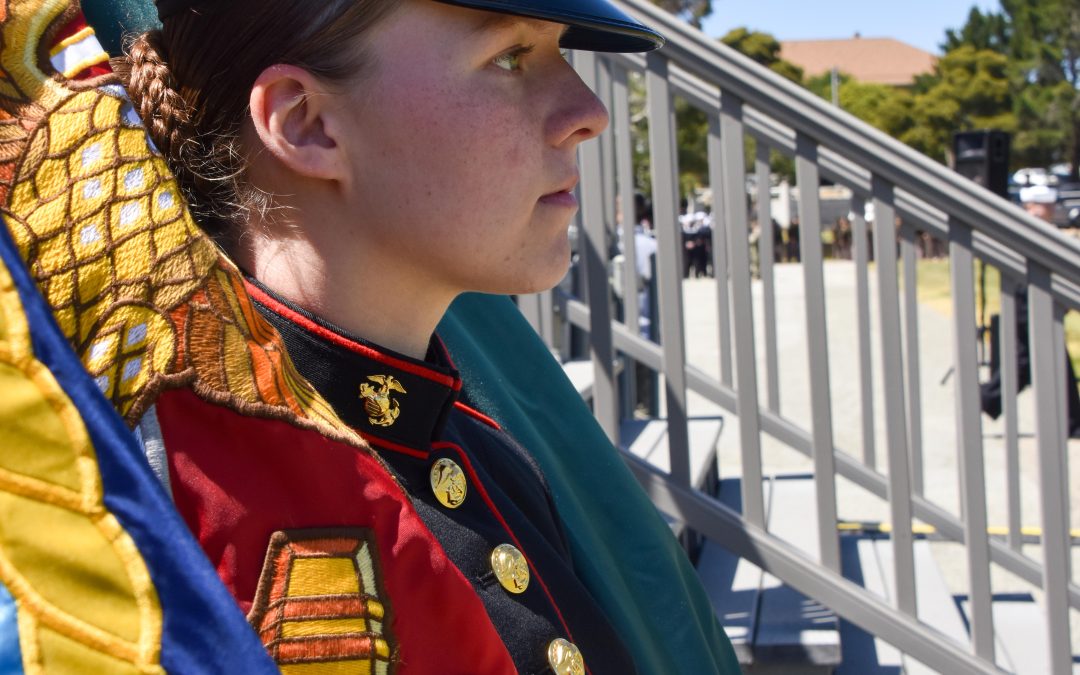By Patrick Bray
DLIFLC Public Affairs
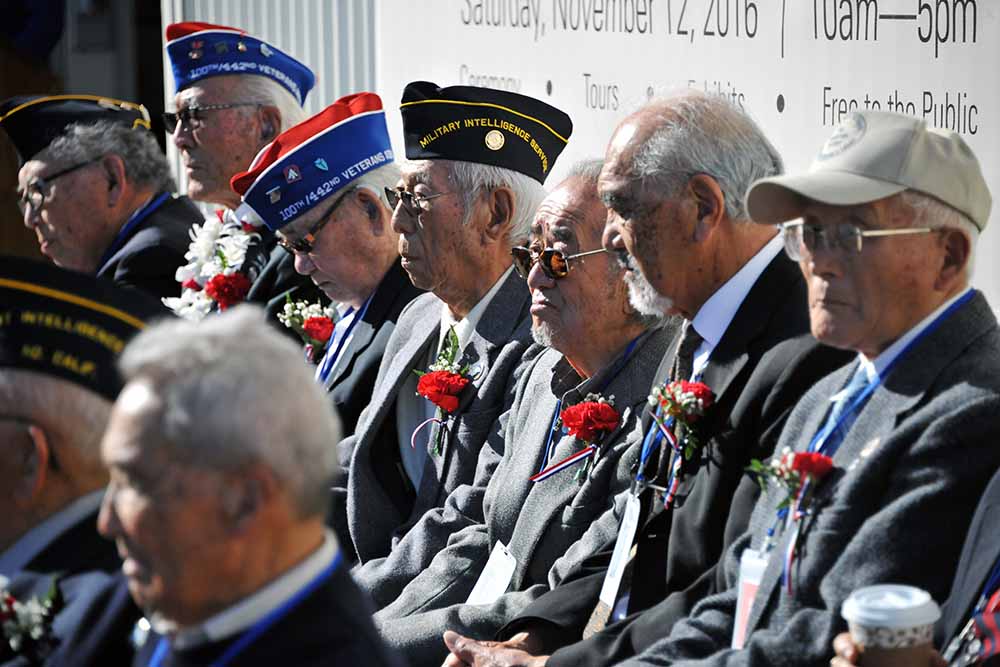
The National Japanese American Historical Society honored Nisei Veterans at the Presidio of San Francisco Nov. 12 marking the 75th anniversary of the founding of the Military Intelligence Service. (Photo by Patrick Bray, DLIFLC Public Affairs)
SAN FRANCISCO – The National Japanese American Historical Society, the Consul General of Japan in San Francisco, and the commandant of the Defense Language Institute Foreign Language Center, Col. Phil Deppert, gathered on Crissy Field at the Presidio of San Francisco Nov. 12 to honor Nisei Veterans and mark the 75th anniversary of the Military Intelligence Service, which began there in 1941.
At that same location, 58 Nisei and two Caucasian Soldiers began studying Japanese in a small school established in an abandoned airplane hangar in November 1941, known as the Fourth Army Intelligence School. Today, that hangar is the home of the Military Intelligence Service Historic Learning Center, which pays tribute to Nisei Soldiers of World War II each year.
“This humble building is a place where history happened. What can we learn here?” asked Dr. James McNaughton, the keynote speaker who is the director of the Army Center for Military History and previously the command historian at DLIFLC.
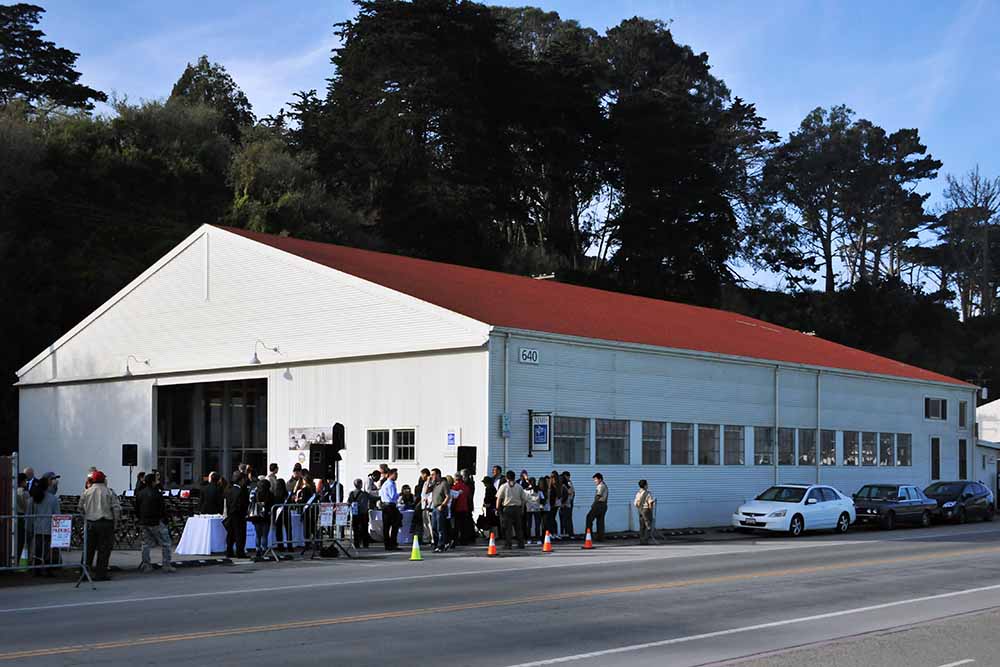
In an abandoned airplane hangar on Crissy Field at the Presidio of San Francisco, 58 Nisei and two Caucasian Soldiers began studying Japanese in November 1941. Today, that hangar is the home of the Military Intelligence Service Historic Learning Center, which pays tribute to Nisei Soldiers of World War II. (Photo by Patrick Bray, DLIFLC Public Affairs)
McNaughton described that in the early days of the school before the war, the hangar served as a barracks and classrooms with most of the Nisei’s daily lives centered on that building as well as the chow hall up the hill. When the attack on Pearl Harbor came in December 1941, “the Army decided not to shut down this school, but the students made a more important decision. They would continue preparing to defend their country,” McNaughton said.
“They made the decision to continue to serve their country. They continued here even while their families were being removed from the West Coast,” said McNaughton in reference to Executive Order 9066, which relocated and incarcerated people of Japanese ancestry.
Eventually, the Army was forced to relocate the entire school to Minnesota, but not until after the first class of Nisei linguists had graduated.
The Nisei’s loyalty and patriotism during World War II opened the way for enlistment opportunities for other Japanese Americans to serve in segregated units, the 100th Infantry Battalion and the 442nd Regimental Combat Team. On October 5, 2010, the 100th, the 442nd and the Military Intelligence Service received the Congressional Gold Medal, officially recognizing the service and sacrifices of the Nisei in World War II.
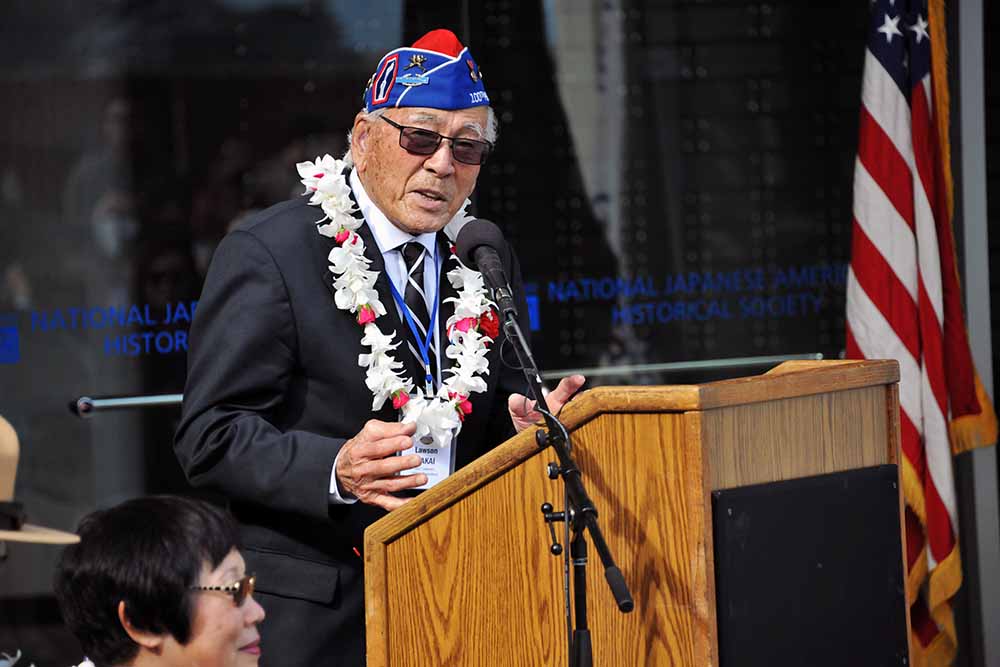
Lawson Sakai, a Veteran of the 442nd Regimental Combat Team, speaks during the National Japanese American Historical Society’s ceremony to honor Nisei Veterans at the Presidio of San Francisco Nov. 12. (Photo by Patrick Bray, DLIFLC Public Affairs)
Lawson Sakai, a Veteran of the 442nd, represented the Nisei Veterans and spoke about their service. Often asked why Nisei had been so willing to serve while their families were being interred under an executive order, Lawson explained that this was the way Nisei showed their loyalty as American citizens, believing that anything less would have caused them to lose face.
Lawson also said that even as a Japanese American, he had not been aware of the language training taking place at Crissy Field in 1941. The “secret” school did not become well known until after the war when it became firmly established at the Presidio of Monterey.
Stressing the importance of the Nisei role during the humble beginnings of DLIFLC, Deppert spoke about the Nisei legacy in the creation of what is the largest foreign language school in the U.S. He said that “the Institute has come a long way from our modest beginnings here in 1941.” He also added that it is the Nisei “foundation that the Defense Language Institute is built upon today.”
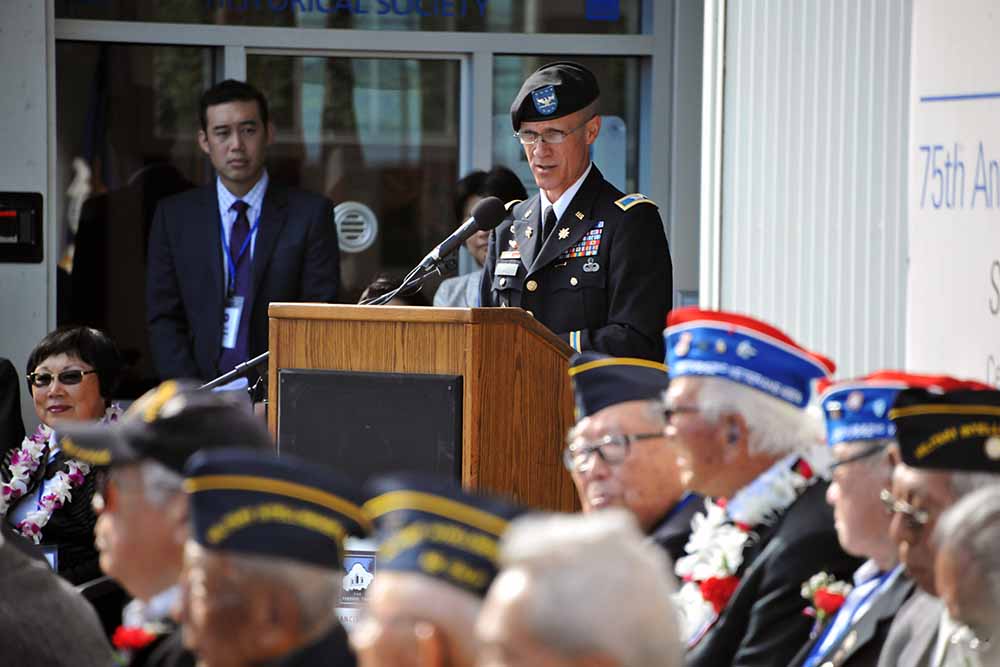
The commandant of the Defense Language Institute Foreign Language Center, Col. Phil Deppert, spoke about the Nisei legacy in the creation of what is now the largest foreign language school in the U.S. during the National Japanese American Historical Society’s ceremony to honor Nisei Veterans at the Presidio of San Francisco Nov. 12. (Photo by Patrick Bray, DLIFLC Public Affairs)
Though the Presidio of San Francisco is now closed and belongs to the National Park Service, the hangar where it all began 75 years ago still remains as part of the Golden Gate National Recreation Area just below the Golden Gate Bridge. To honor the Nisei’s service and sacrifice, the National Japanese American Historical Society established the MISL Center as a place where younger generations could see Nisei accomplishments and bravery during World War II.
DLIFLC provides resident instruction in 23 languages at the Presidio of Monterey with the capacity to instruct another 65 languages in Washington, D.C., graduating more than 220,000 linguists since 1941. In addition, multiple language training detachments exists at sites in the U.S., Europe, Hawaii and Korea spanning all the U.S. geographic combatant commands in support of the total force.

